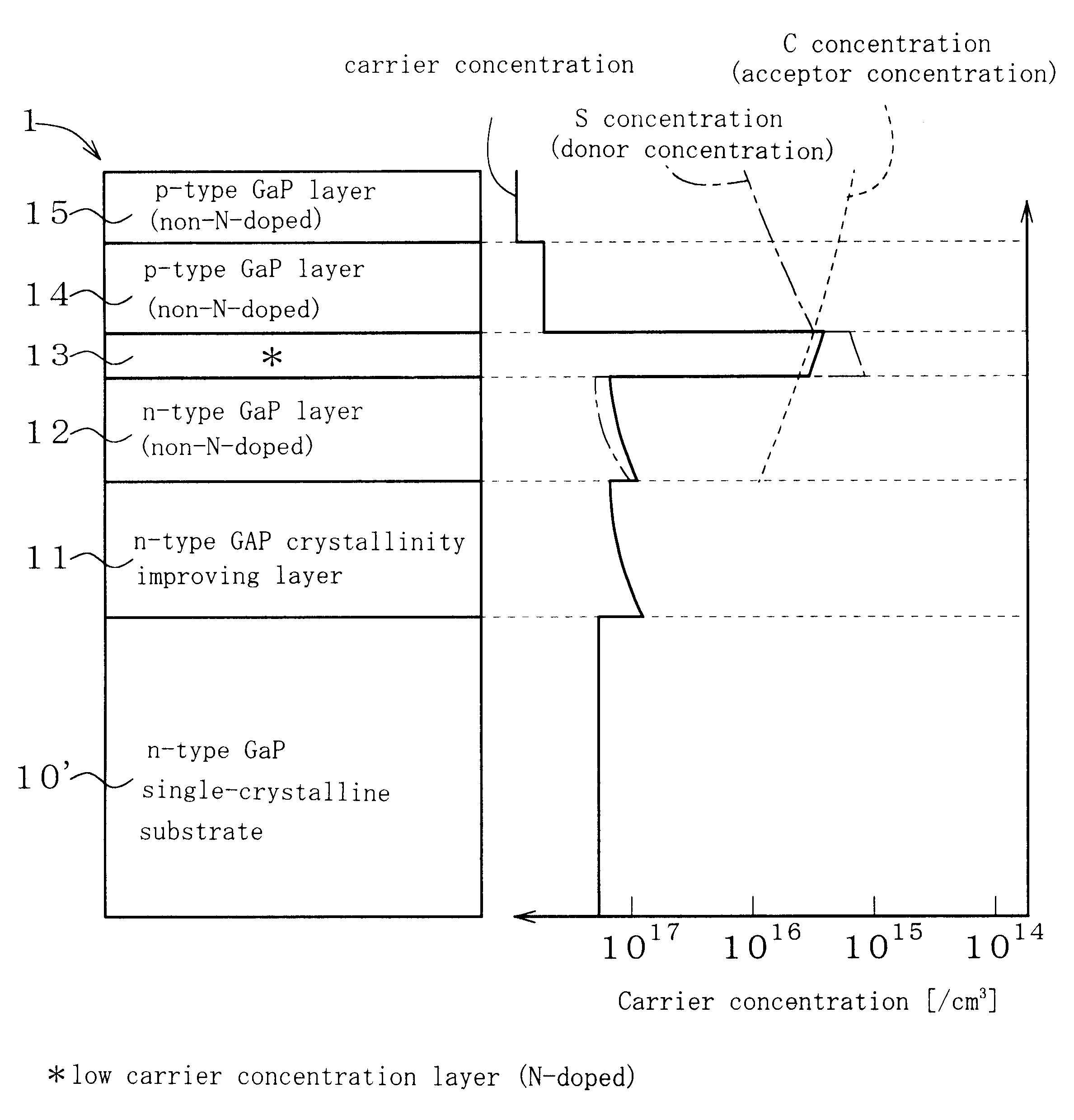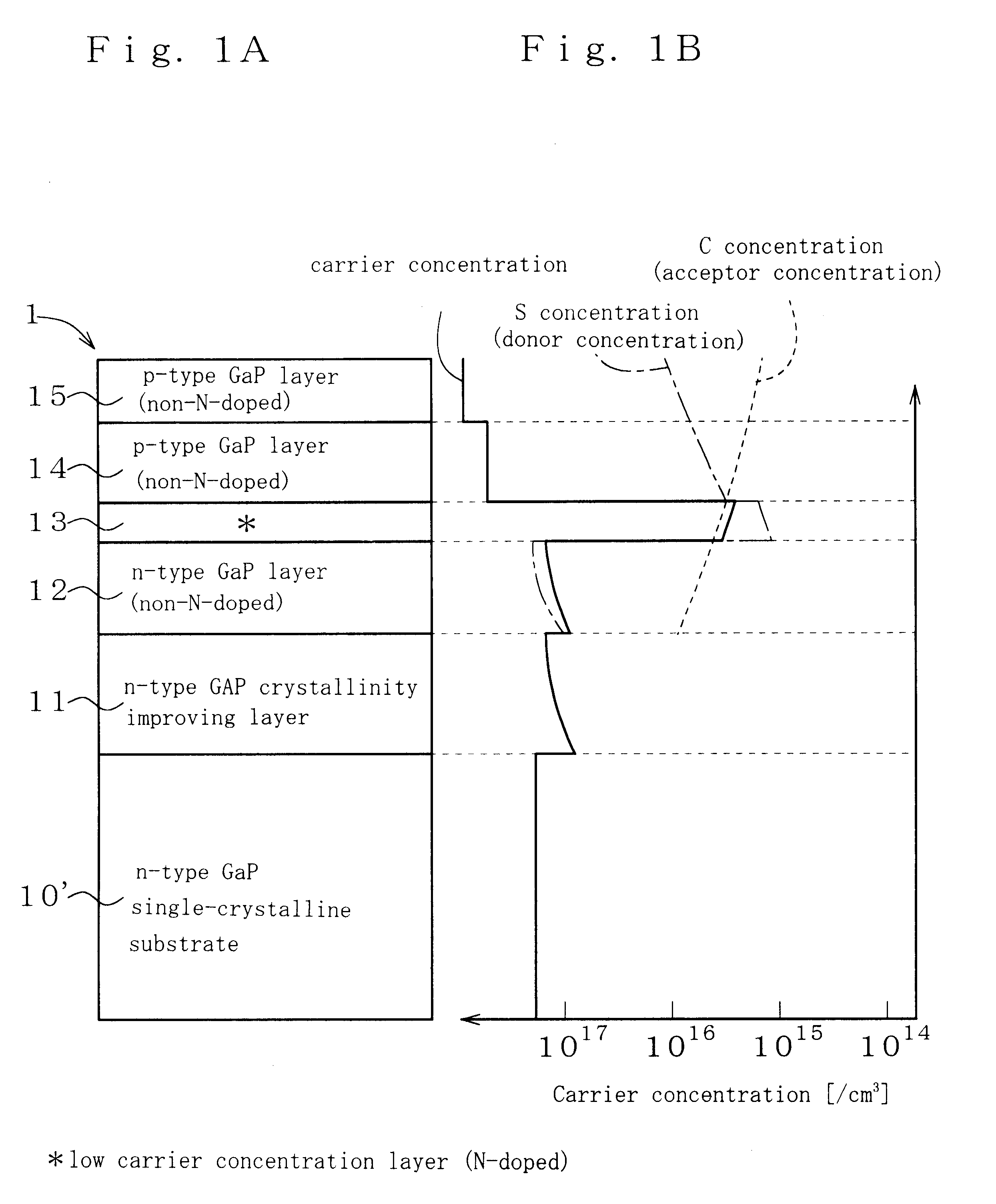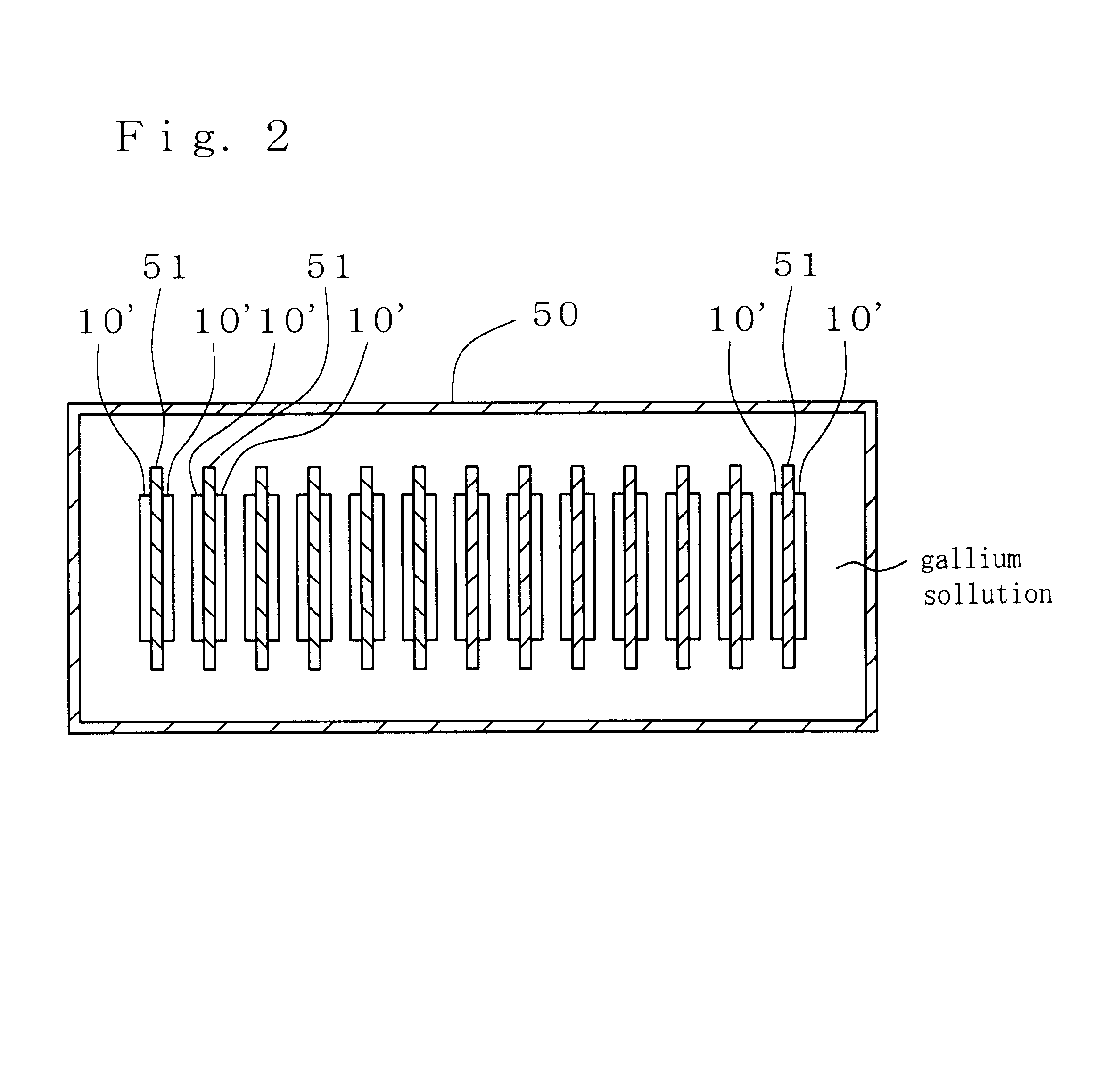Gallium phosphide luminescent device
a luminescent device and gallium phosphide technology, applied in the direction of semiconductor/solid-state device manufacturing, semiconductor devices, electrical apparatus, etc., can solve the problems of difficult to control the carrier concentration independently from the n concentration, difficult to further raise the luminance at a stable wavelength, and disadvantageous in terms of obtaining pure green light emission
- Summary
- Abstract
- Description
- Claims
- Application Information
AI Technical Summary
Problems solved by technology
Method used
Image
Examples
first embodiment
(First Embodiment)
FIGS. 1A and 1B are schematic drawings respectively showing a section and depth profile of the carrier concentration of a GaP light emitting device according to the present invention. For simplicity, FIG. 1A does not show electrodes provided on the "n" terminal and "p" a terminal surfaces.
As shown in FIG. 1A, the GaP light emitting device 1 of the present invention has on an n-type GaP single-crystalline substrate 10, an n-type GaP crystallinity improving layer 11, an n-type GaP layer 12, a low carrier concentration layer 13, and p-type GaP layers 14 and 15 stacked in this order. The n-type GaP single-crystalline substrate 10 and the n-type GaP crystallinity improving layer 11 are added with silicon (Si) as an n-type dopant. On the other hand, the n-type GaP layer 12 is added with sulfur (S) and carbon (C) as impurities (note that the n-type GaP layer 12 in this embodiment is not doped with N).
The low carrier concentration layer 13 is a p-type GaP layer in this emb...
second embodiment
(Second Embodiment)
An exemplary method for fabricating the GaP light emitting device 1 shown in FIG. 1A will be described. FIG. 6 shows a typical constitution of a liquid-phase epitaxial growth apparatus used for growing, by the liquid-epitaxial growth method, the individual layers on the GaP single-crystalline substrate 10'. As shown in FIG. 6, in a process tube 23, a carbon-made slide boat 24 (growth vessel) having a wafer chamber 25 for housing a compound semiconductor wafer 30 (the n-type GaP single-crystalline substrate 10' having an epitaxially grown layer formed thereon) is set, and a bottom-opened solution reservoir 27 containing a gallium solution 28 is provided thereon so that it can slide on the slide boat 24 with the aid of a sliding rod 26 (that is, so that the slide boat 24 can slide relative to the gallium solution 28). The gallium solution 28 is dissolved with S as an n-type dopant.
In the process tube 23 and on the side of a carrier gas supply port 31, Zn 29 as a p-t...
third embodiment
(Third Embodiment)
In this embodiment, another method for fabricating the GaP light emitting device 1 shown in FIG. 1A will be described referring to process diagrams shown in FIGS. 8A to 8H. First, as shown in FIG. 8A, the gallium solution 16 obtained by dissolving at 1060.degree. C. polycrystalline GaP and Si as an n-type dopant is placed on the n-type GaP single-crystalline substrate 10'. The temperature of a system including the gallium solution 16 is gradually lowered, to thereby allow GaP dissolved in the gallium solution 16 to deposit onto the n-type GaP single-crystalline substrate 10'. Thus the compound semiconductor wafer 30 composed of the n-type GaP single-crystalline substrate 10' and the Si-doped n-type GaP crystallinity improving layer 11 formed thereon is obtained (FIG. 8B).
Next, as shown in FIG. 8C, a gallium solution 17 containing S as an n-type dopant dissolved therein at a concentration higher than that in a gallium solution 18 described later is placed on the com...
PUM
 Login to View More
Login to View More Abstract
Description
Claims
Application Information
 Login to View More
Login to View More - R&D
- Intellectual Property
- Life Sciences
- Materials
- Tech Scout
- Unparalleled Data Quality
- Higher Quality Content
- 60% Fewer Hallucinations
Browse by: Latest US Patents, China's latest patents, Technical Efficacy Thesaurus, Application Domain, Technology Topic, Popular Technical Reports.
© 2025 PatSnap. All rights reserved.Legal|Privacy policy|Modern Slavery Act Transparency Statement|Sitemap|About US| Contact US: help@patsnap.com



